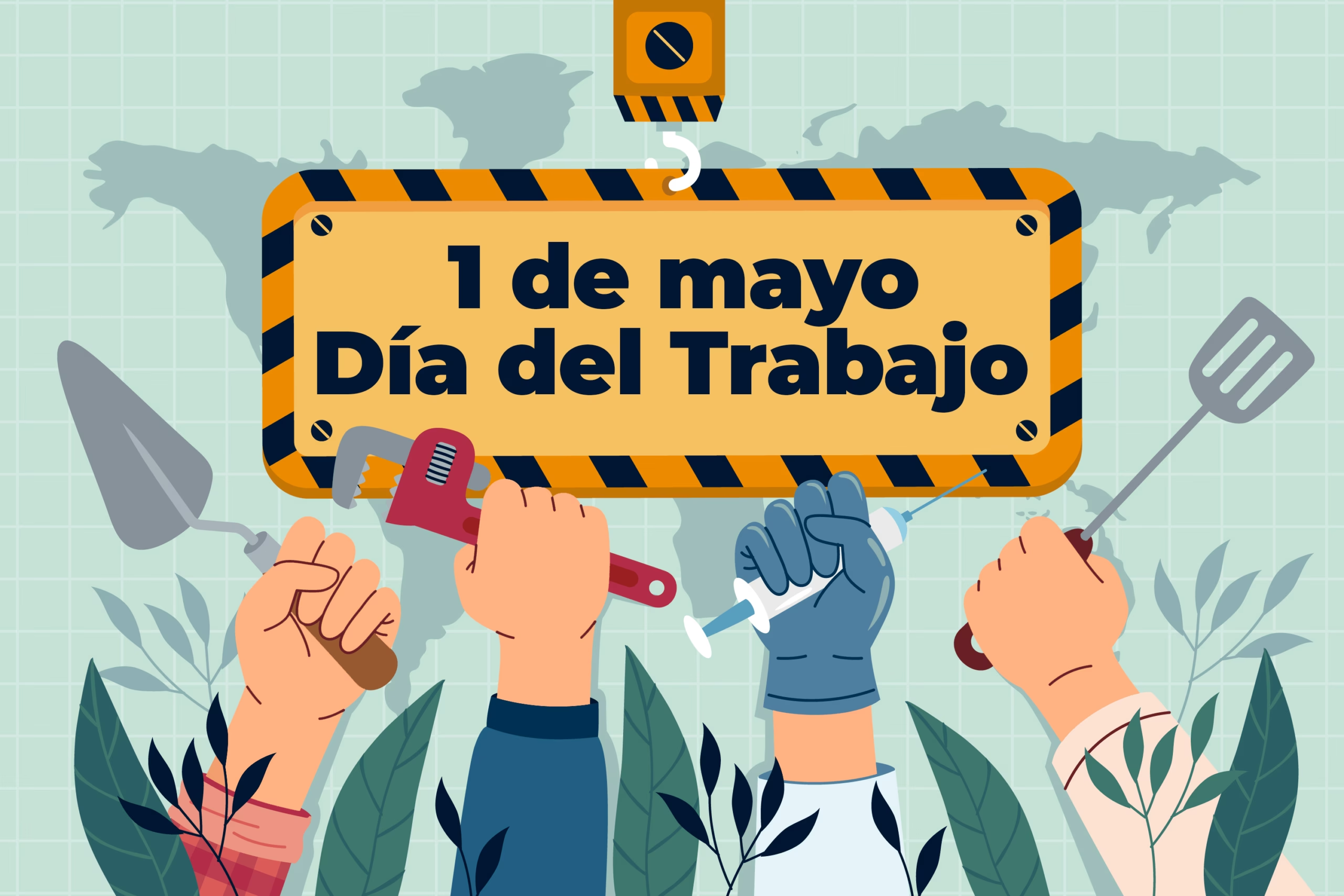El Día Del Trabajador tiene raíces en Estados Unidos, ¿por qué no se celebra el 1º de mayo?
Labor Day has roots in the United States. Why isn’t it celebrated on May 1st?

(LPL/USATODAY) – Cada año, el 1º de mayo se celebra como el Día Internacional de los Trabajadores en decenas de países alrededor del mundo.
Marchas, protestas y actos culturales reúnen a miles de personas en ciudades de América Latina, Europa, Asia y África para conmemorar las luchas históricas del movimiento obrero. Sin embargo, en Estados Unidos —el país donde surgió el evento que inspiró esta conmemoración global— la fecha pasa prácticamente desapercibida en el calendario oficial.
Esta paradoja ha generado confusión y curiosidad, especialmente entre las comunidades inmigrantes que provienen de países donde el 1º de mayo es feriado nacional. ¿Por qué Estados Unidos decidió no reconocer oficialmente una fecha que tiene sus raíces en su propia historia laboral?
Para entenderlo, es necesario repasar los orígenes del Día del Trabajador, los motivos políticos detrás del rechazo al 1º de mayo y el rol actual que desempeña esta fecha entre los trabajadores en el país, especialmente en la comunidad hispana.
¿Qué se celebra el 1º de mayo, el Día del Trabajador?
El 1º de mayo se celebra como una jornada de reivindicación laboral, en la que se honra a las personas trabajadoras y se recuerdan los logros alcanzados gracias a la organización sindical y a los movimientos sociales. Es también un momento para reflexionar sobre los desafíos que aún enfrentan millones de trabajadores en todo el mundo: sueldos bajos, falta de beneficios, precarización, explotación o falta de protección legal.
¿Y por qué se celebra en esa fecha?
La razón por la que se conmemora el 1º de mayo tiene su origen en una lucha histórica que ocurrió en Chicago. El 1 de mayo de 1886, más de 300,000 trabajadores en todo el país salieron a la calle para exigir una jornada laboral de ocho horas, una demanda revolucionaria en una época donde muchos trabajaban hasta 16 horas diarias.
Tres años después, en 1889, el Congreso Obrero Internacional en París declaró el 1º de mayo como el Día Internacional del Trabajador, en memoria de los mártires de Chicago. Desde entonces, esta fecha se convirtió en una jornada de lucha en todo el mundo… excepto en el país donde comenzó.
¿Por qué EE. UU. no lo celebra? ¿Cómo se compara a Labor Day?
La decisión de no adoptar el 1º de mayo como fecha oficial fue estratégica y profundamente política. A finales del siglo XIX, el gobierno estadounidense temía que la creciente organización de los trabajadores, influenciada por ideologías socialistas y anarquistas, representara una amenaza al sistema económico y social del país.
En 1894, el presidente Grover Cleveland impulsó la creación del Labor Day, a celebrarse el primer lunes de septiembre. Esta nueva festividad buscaba reconocer las contribuciones de los trabajadores sin asociarse con el movimiento obrero radical ni con la Revuelta de Haymarket. En otras palabras, fue una manera de apaciguar el conflicto social sin darle visibilidad al activismo laboral del 1º de mayo.
English:
(LPL/FOX13) – Every year, May 1st is celebrated as International Labor Day in dozens of countries around the world.
Marches, protests, and cultural events bring together thousands of people in cities across Latin America, Europe, Asia, and Africa to commemorate the historic struggles of the labor movement. However, in the United States—the country where the event that inspired this global commemoration originated—the date goes virtually unnoticed on the official calendar.
This paradox has generated confusion and curiosity, especially among immigrant communities from countries where May 1st is a national holiday. Why did the United States decide not to officially recognize a date that has its roots in its own labor history?
To understand this, it is necessary to review the origins of Labor Day, the political reasons behind the rejection of May 1st, and the current role this date plays among workers in the country, especially in the Hispanic community.
What is celebrated on May 1st, Labor Day?
May 1st is celebrated as a day of labor rights, honoring workers and remembering the achievements made through union organizing and social movements. It is also a time to reflect on the challenges still faced by millions of workers around the world: low wages, lack of benefits, precarious employment, exploitation, and lack of legal protection.
And why is it celebrated on that date?
The reason May 1st is commemorated has its origins in a historic struggle that took place in Chicago. On May 1, 1886, more than 300,000 workers across the country took to the streets to demand an eight-hour workday, a revolutionary demand at a time when many worked up to 16 hours a day.
Three years later, in 1889, the International Workers’ Congress in Paris declared May 1st International Workers’ Day, in memory of the Chicago martyrs. Since then, this date has become a day of struggle around the world… except in the country where it began.
Why doesn’t the US celebrate it? How does it compare to Labor Day?
The decision not to adopt May 1st as an official date was strategic and deeply political. At the end of the 19th century, the US government feared that the growing labor organization, influenced by socialist and anarchist ideologies, posed a threat to the country’s economic and social system.
In 1894, President Grover Cleveland promoted the creation of Labor Day, to be celebrated on the first Monday in September. This new holiday sought to recognize the contributions of workers without being associated with the radical labor movement or the Haymarket Riot. In other words, it was a way to appease social conflict without giving visibility to the May Day labor activism.








